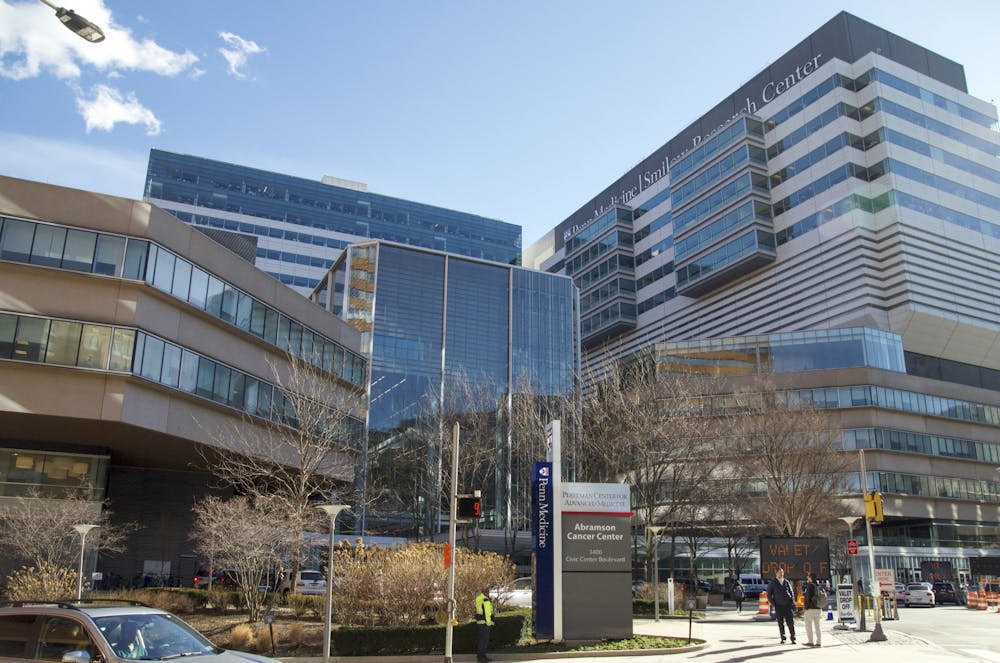A National Labor Relations Board election for Penn Medicine residents and fellows who are seeking a union has been scheduled, allegedly prompting pushback from the University.
The residents filed for an election with the NLRB after the University failed to accept the demands for voluntary recognition sent by the Committee of Interns and Residents on Feb. 17. The election will be held in person from May 3 to May 5 at five locations, including the Hospital of the University of Pennsylvania, HUP pavilion, Penn Med Rittenhouse, Penn Presbyterian Medical Center, and Pennsylvania Hospital, according to the CIR.
The CIR is the largest house staff union in the United States and currently represents over two-thirds of Penn Med residents and fellows. Since the election details were finalized, house staff organizers alleged that Penn Med leadership has been spreading misinformation about the voting process.
Residents and fellows have expressed confusion about where they can vote. Program directors have reportedly been telling house staff that votes will only be counted if they are cast at the assigned location, according to the organizers.
A Penn Med spokesperson did not respond to multiple requests for comment.
While each department has an assigned election location to ensure votes are not counted twice, third-year internal medicine resident Jackson Steinkamp told The Daily Pennsylvanian that he received confirmation from the NLRB that house staff can vote at any location. Votes cast at non-assigned locations just require additional processing.
“[Penn’s messaging] makes things really difficult,” Steinkamp said. “Some people work 20 hour shifts; some people work nights. We can have extremely busy schedules and finding the time to vote in person isn’t easy, even without restrictions on location.”
The organizers also expressed frustration with Penn Med's refusal to conduct the election by mail-in ballots, citing recent union movements at Stanford Healthcare and Montefiore Medical Center.
RELATED:
Health philanthropy executive Richard Besser to speak at 2023 School of Nursing Commencement
AI-powered reminders help Penn Medicine doctors improve end-of-life care for cancer patients
While in-person elections are legal under the NLRB, the organizers said that long hours and intense workloads will make in-person voting difficult for some residents, particularly those in surgery or anesthesia specialties.
As a result, organizers said that Penn Med should commit to a structured relief process to ensure that schedules allow every house staff member the opportunity to vote.
“We take Penn’s commitment to allow people adequate access to vote very seriously,” third-year OB/GYN resident Madison Sharp said. “A failure to commit to a structured relief process would only further justify the argument that Penn doesn't care about our opinions."
In response to the unionization campaign, Penn has hired Cozen O’Connor, a Philadelphia-based law firm that specializes in union avoidance, CIR spokesperson Annie Della Fera said. Della Fera said that this tactic is not uncommon among employers facing union campaigns.
Cozen O’Connor’s website outlines their labor relations and dispute capabilities and says that they “prepare for and respond to picket lines, strikes, lockouts, and other economic campaigns” and “help employers avoid unionization through positive employee relations.”
Cozen O’Connor did not respond to a request for comment.
The Penn Graduate Medical Education Office also shared “Facts 4 Penn Med House Staff,” a website that was “developed to provide factual information about unions,” with house staff. Organizers said that the website holds an anti-union bias.
The website warns that unionization “typically limits the discretion a Program Director would have to address individual concerns,” including days off and funding for professional expenses. It also encourages house staff to consider that unions only need the support of a simple majority.
“If a pro-union resident or other union organizer is ignoring you now when it is trying to gain support to win the election, you should think about how it might treat you if it wins the election,” the website said.
Sharp said that Penn leadership has been meeting with Penn Med departmental leadership to express their views on the union, who in turn meet with residents to share them.
Other messaging from the administration has focused on dividing the workers, Steinkamp said.
“Whether it’s different departments within residency or residents against attendings, the higher-up administration has been pitting us against each other and trying to convince us that [the union] is somehow bad for the institution,” Steinkamp said.
Organizers said that they anticipated and prepared for this response from Penn and believe the messaging is not effective. They said they have received significant support from other hospital staff, including attending physicians and nurses. Sharp and Steinkamp added that they have not experienced or heard of other residents experiencing retaliatory acts.
The organizers also expressed solidarity with the growing number of residents who are unionizing across the country.
“It feels very cool to be a part of the larger movement that is resident and fellow unionization,” Steinkamp said. “Success feels more possible when you see other people do it and have lots of resources.”
Organizers said that they are continuing to use a grassroots approach to counter the administration’s messaging. Leaders in each department have been communicating correct voting rules to their residents. Organizers have also been in the process of creating fliers with clear instructions to hang around the hospital.
“We’re all doing our best to stay positive and make sure everyone’s informed because regardless of their stance on unions, everyone should have the opportunity to vote,” Sharp said.









